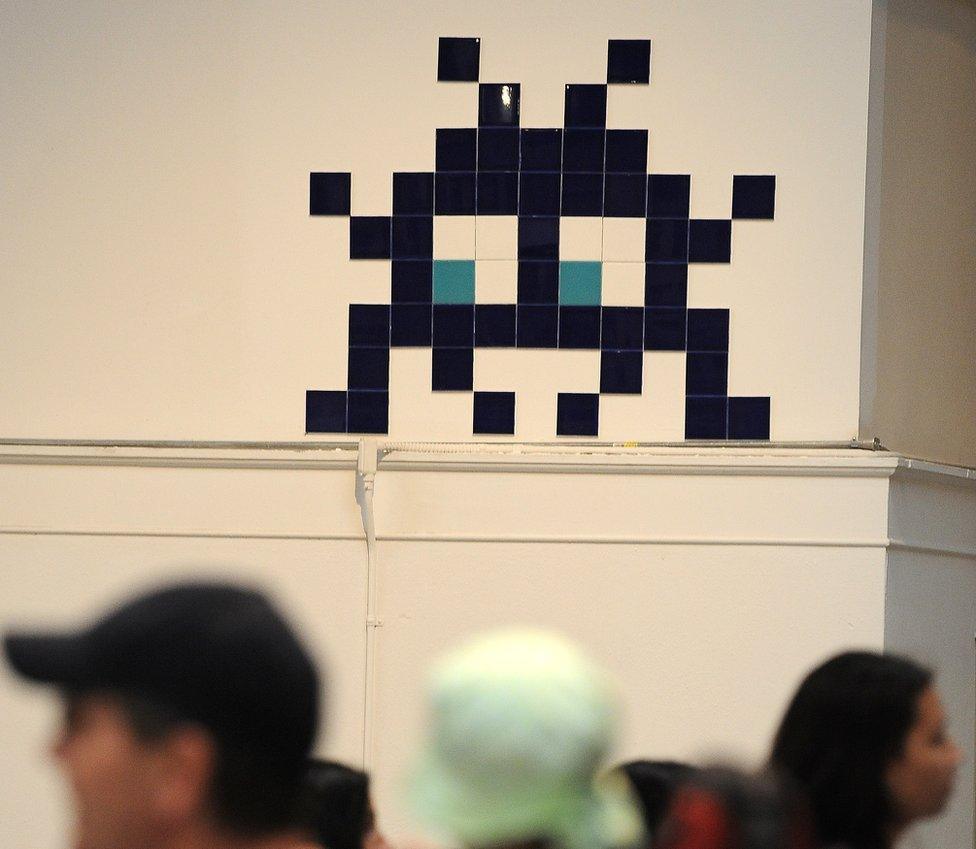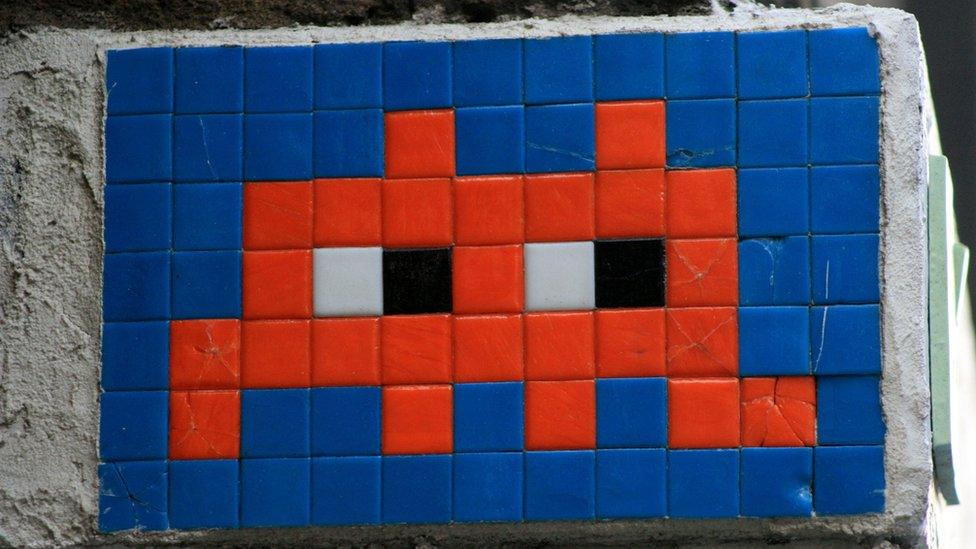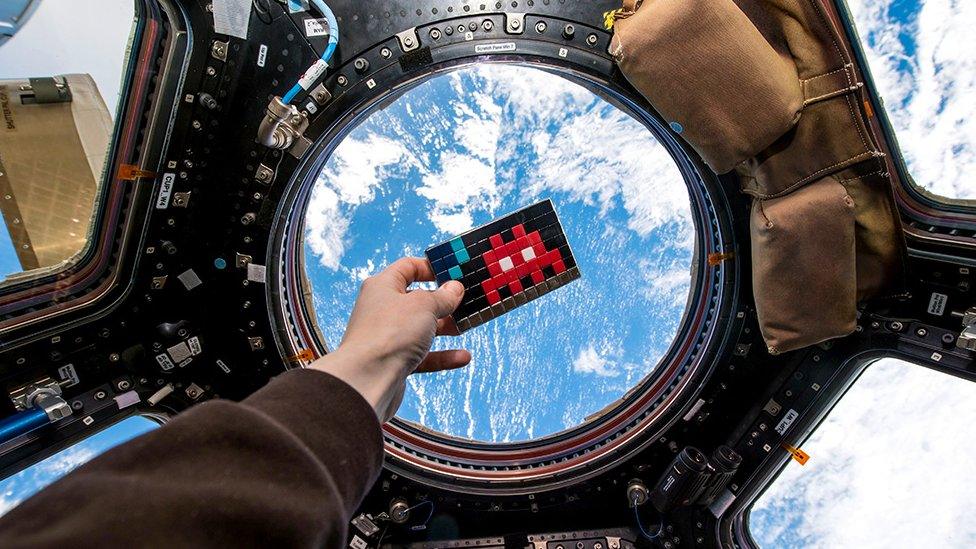How I threw away a work of modern art
- Published

A work by French street artist Invader on display at an exhibition in Los Angeles
To me, it looked like a child's crude attempt at a mosaic. About a dozen small square tiles of different colours. Glued to the wall in a geometric design vaguely resembling a face with two square eyes.
It stood out in the otherwise empty and dingy Paris flat. Once my home, I was moving back in, after nearly 20 years away. My tenants, three young single men, were showing me round before they left.
"What's that?" I asked, pointing at the cluster of tiles.
"That's by Invader," my tenant replied. "He's a street artist. He's like a French Banksy."
I quite liked Banksy, but the young man must have seen that I didn't appear overly impressed by his French counterpart.
"You must leave this," he said earnestly. "One day it will be worth a lot of money."

The tiled pieces such as this one in London are inspired by the 1978 video game Space Invaders
Being British, I nodded politely - but inwardly I chortled at the notion that a few tiles stuck on a bedroom wall could ever be considered a work of art.
Trying to prove I wasn't too old to get it, I said: "It reminds me of something." After struggling for a few seconds to recall exactly what, I exclaimed triumphantly: "Tetris!"
Now it was his turn to look dubious, so I explained: "You know, the video game from the 80s." "Not Tetris," he said, mock-patiently. "Space Invaders. The mother of modern video games."
He added: "The artist came to one of our parties and ended up staying a few months. It was his way of saying thank you. Now we're leaving it for you."
Read more about Invader
My neighbours had complained over the years - with varying degrees of indignation and perhaps envy - that the three young men had thrown raucous parties nearly every weekend. The flat was such a wreck that my tenant admitted that, when he was working during the week as an up-and-coming executive, he stayed at his girlfriend's.
Now he was getting married, while I was about to transform the bachelor party pad back into a respectable bourgeois home.
I duly promised the young men that I would look after the artwork and thanked them for leaving it. But then the builders came to replaster and repaint the room.
"I might leave that," I told them.
They looked at me sceptically. "Why do you want to keep it? It will look strange," the painter said.
I hesitated, but only for a moment. The wall was stripped, replastered and painted a tasteful shade of blanc cassé - off-white, far more aesthetically pleasing than a bunch of multicoloured tiles.
That was nine years ago, when I was moving back to France.

Find out more
From Our Own Correspondent has insight and analysis from BBC journalists, correspondents and writers from around the world
Listen on iPlayer, get the podcast or listen on the BBC World Service, or on Radio 4 on Thursdays at 11:00 and Saturdays at 11:30 BST

As the years passed, I noticed more of the Space Invaders mosaics on buildings around Paris. Never did I feel a twinge of regret for destroying the one in my flat.
Then, two years ago, it began to dawn on me what I'd done.
I reported on how one of the distinctive mosaics of the French street artist known as Invader was about to be displayed - on board the International Space Station. The European Space Agency said it would - in their words - highlight the bridges between art and space.
It was bigger, but otherwise similar to the one I'd unceremoniously stripped out of my flat.

Artwork by Invader has turned up on the International Space Station and European Space Agency ground installations
Invader was a global phenomenon, famous in New York, Hong Kong, London, and of course Paris.
Then came the real blow. To my horror, I learned that one of his works had sold for more than €200,000 (£178,000; $233,000).
The mosaics I'd once scoffed at are now so sought-after that thieves posing as municipal workers in high-visibility vests went around Paris this summer carefully removing them.
Theft and vandalism have always been problems for Invader, a graduate of the Paris School of Fine Arts who was born in 1969, the year man landed on the Moon.
But there's a fightback: fans known as "reactivators" photograph his works and reconstruct those that get damaged or disappear.
Had I taken a picture of the one in my flat, I could have called in the reactivators.
Now, I'll just have to live with the fact that I tossed out a valuable work of art because I preferred a smooth, blank, white wall.
Perhaps I could try to market a piece of that as a work of art. But hold on a minute - hasn't someone already come up with that concept?